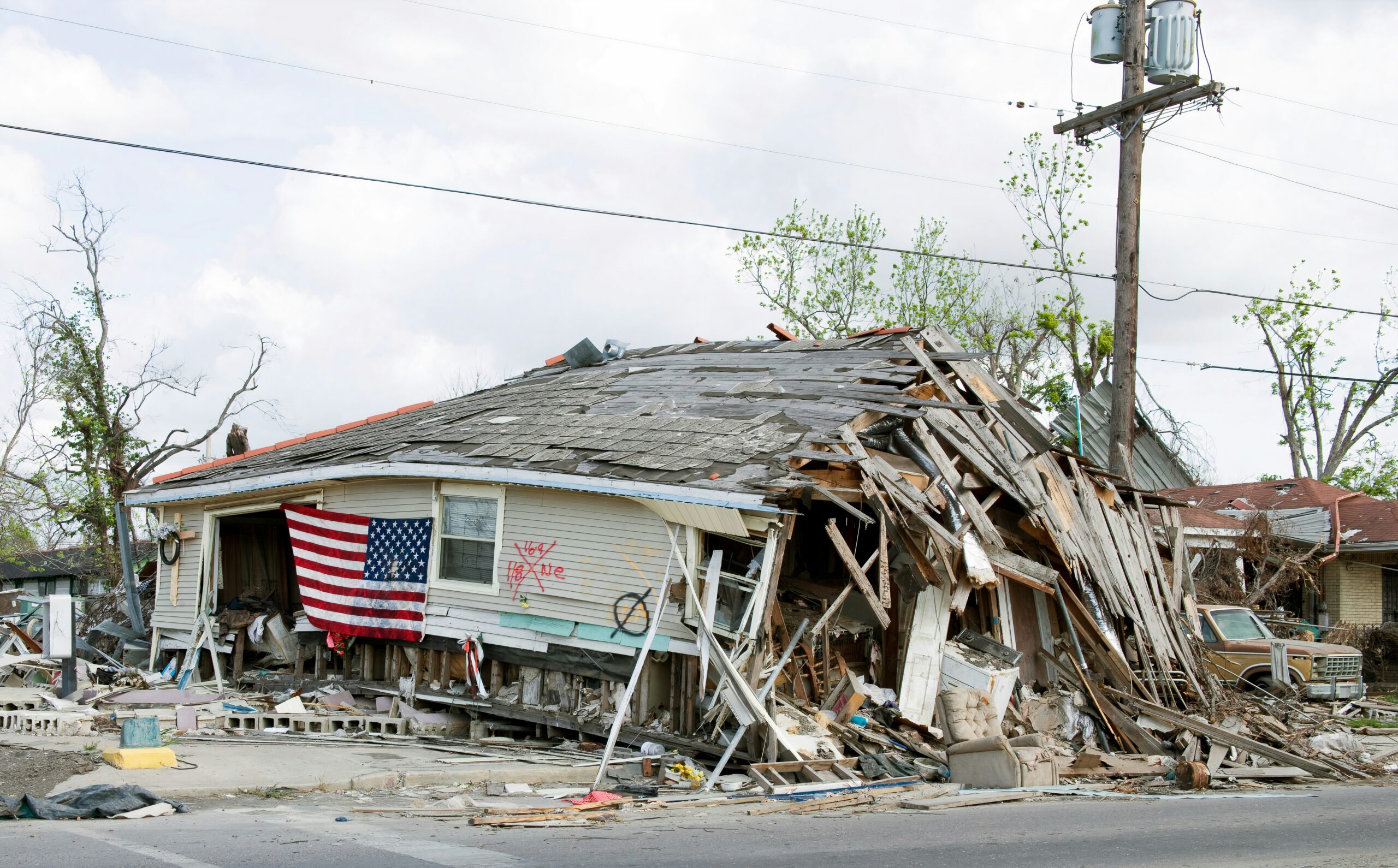Stay
UpdateD
Join the BPC
Email List
Stay up to date on exciting projects and upcoming events from the Black Promoters Collective.

On Aug. 29, 2005, Hurricane Katrina devastated the Gulf Coast and became a defining moment in modern American history. The storm made landfall near New Orleans as a category three hurricane, but its impact was far deadlier than the category suggests. Massive levee failures flooded nearly 80% of the city and left visible chasms in local communities. This exposed deep inequities in infrastructure, governance and emergency preparedness.
It also had a tragic impact and led to a staggering death toll and thousands of people being displaced. Families lost homes, neighborhoods were practically erased from maps and an entire city fought for survival. Nearly two decades later, Katrina’s name still carries weight as a symbol of tragedy. The storm’s legacy has left such an impact that people still wonder, how many people died in Hurricane Katrina? Here’s what we know about this dark day in history and its cultural impact.
Category 5 hurricanes are nature’s most extreme storms, with some winds hitting up to 157 miles per hour. In all of recorded U.S. history, only a handful of storms have reached this level of fury at the point of landfall. The 1935 Labor Day Hurricane in the Florida Keys remains the most intense U.S. hurricane in terms of pressure. It even leveled whole communities. But another heavy-hitting storm was Hurricane Camille in 1969, which struck Mississippi with near apocalyptic strength. This hurricane is remembered for its almost unbelievable winds and storm surge.
Then there was Hurricane Andrew in 1992 which ripped through south Florida and even prompted reforms to building codes. But most recently Hurricane Michael tore into the Florida panhandle in 2018, shocking forecasters with its rapid intensification just before landfall. While many storms in the Atlantic have briefly reached category five status over open water, only these four met land at that level in the continental U.S. Their rarity highlights how unusual it is to face such ferocity, but also how catastrophic the impact can be when it happens.
Hurricane Katrina is widely remembered as a Category 5 storm, but its intensity varied. While over the Gulf of Mexico, it did reach a terrifying peak with winds as high as 175 miles per hour, making it one of the strongest storms ever recorded in the basin, per the National Ocean Service. However, by the time it made landfall in Louisiana and Mississippi on Aug. 29, 2005, it had weakened to a Category 3 hurricane, with winds between 125 to 140 miles per hour.
The storm surge and the subsequent failure of New Orleans’ levee system proved far deadlier than the wind itself. Since the city’s defenses crumbled, water poured in and drowned entire neighborhoods. Hurricane Katrina demonstrated that the Saffir-Simpson category scale, which is mainly focused on wind, cannot fully capture a storm’s destructive potential when infrastructure is fragile.
The Louisiana Superdome became a stark emblem of the Katrina crisis at the time. Despite some early reports saying otherwise, the Superdome did not flood. However, the conditions inside were certainly not ideal, with tens of thousands of people seeking shelter there. Electricity failed, air conditioning was not functioning and sanitation systems broke down.
Then supplies of food and water ran dangerously low and within days the building was overcrowded. It got stifling hot and the air was filled with fear. So although the structure itself stood firm against the storm and it did not overflow, it took a serious hit, just as the community did.
The question of how many people died in Hurricane Katrina does not have a single, simple answer. The most widely accepted figures estimate that the death toll was between 1,392 and 1,800, per The National Weather Service. Differences in reporting come from how indirect deaths are counted. Things like medical complications, lack of access to emergency services or even healthcare and deaths that occurred in the following weeks are hard to account for. But given the scale of the storm, a high number of people lost their lives that day.
The primary cause of death during Hurricane Katrina was flooding. When levees failed entire neighborhoods were submerged. Many residents, particularly the elderly or those without the means to evacuate, were trapped in their homes. In addition, hundreds of people in nursing homes and hospitals passed from illnesses, neglect or the inability to receive timely medical treatment.
Ultimately, Katrina revealed that natural disasters do not affect everyone equally, as Wired investigated. Vulnerable groups, like the poor, elderly or sick, were disproportionately represented among the fatalities. The death toll numbers are sobering but behind them are countless individual human stories of struggle, loss and resilience.
Recovery from Katrina was not measured by mere days or weeks – it has taken decades. The initial rescue and relief efforts began within days but the rebuilding of homes, schools and general infrastructure stretched on for a while. And more than ten years later, there were still entire neighborhoods in New Orleans abandoned, overgrown and silent.
In terms of recovery, community groups, churches and volunteer organizations were essential to recover after the storm. Grassroots efforts like the Common Ground Collective provided hands-on help even when official aid lagged. And although some families never returned or permanently resettled elsewhere, parts of New Orleans have thrived again. Despite the scars that Katrina left, recovery from a storm like that is clearly a generational effort which has steadily progressed.
How many people died in Hurricane Harvey?
As The Center for Disaster Philanthropy reports, around 68 direct fatalities and 39 indirect fatalities occurred after the catastrophic flooding in Texas, most of which were drownings.
How many people died in Hurricane Helene?
As Nature reports from the National Hurricane Center’s (NHC) final report, a total of 250 fatalities resulted from Hurricane Helene. This made it the second deadliest hurricane to strike the continental U.S. (within the last 50 years).
What was the strongest hurricane to ever hit the United States?
In terms of strength, the most destructive hurricanes have been Katrina and Mitch, per BBC. While in terms of death toll, the deadliest has been the Galveston hurricane of 1900, since it caused between 6,000 and 8,000 deaths.
Stay up to date on exciting projects and upcoming events from the Black Promoters Collective.

©2025 Black Promoters Collective (BPC) All Rights Reserved.